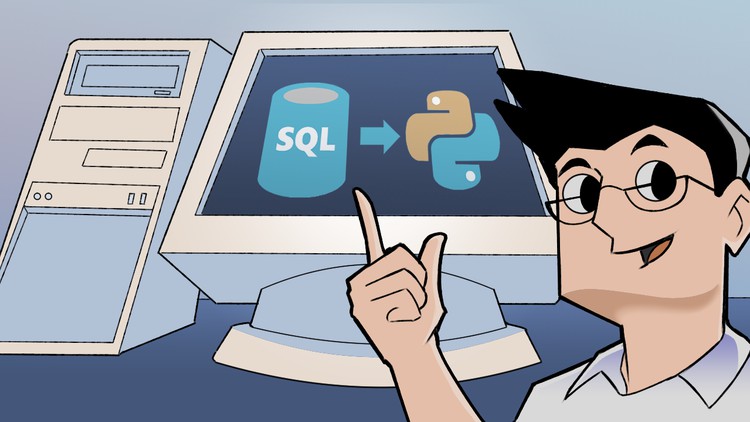SQL to Python for Beginners
An intro Course illustrating SQL equivalents in Python
What you’ll learn
SQL to Python for Beginners
- Learn Python by Example
- Learn to translate SQL into Python
- Manipulate data in Python like you would with SQL
- Become familiar with the Pandas library in Python
Requirements
-
Basic Knowledge of Python
Description
Overview
In this course, you will learn how to use the Python Pandas library to achieve the core SQL functionality listed below.
If you are ready to make the leap from SQL to Python, this course will help you through your adoption and increased usage of Python for data manipulation, transformation, and ultimately data analysis.
Understanding how to achieve SQL data manipulation features in Python will serve as your foundation for using Python for advanced analysts, data science, and other machine learning tasks.
Prerequisites
This course is recommended for anyone comfortable with SQL and would like to increase their adoption of Python for their day-to-day. It’s also recommended that you have a base understanding of Python or some familiarity with any programming language to get the most out of this course. Other prerequisites will be outlined in the Introduction video, but having the following set up on your computer ahead of time will allow you to dive right in.
- Python 3.7 or above-installed
- pandas library installed (pip install pandas)
- IDE (e.g. PyCharm, VS Code)
- Git (optional, for cloning repo with code examples)
Core Concepts taught in this course
Core SQL Concepts translated to Python Pandas code are:
- SQL Limit
- SQL Distinct
- SQL Where
- SQL WHERE / AND (Multiple Predicates)
- SQL IN ( )
- SQL NOT IN ( )
- SQL Aggregate Functions
- SQL MIN
- SQL MAX
- SQL COUNT
- SQL COUNT DISTINCT
- SQL AVERAGE / MEAN
- Mode (Not usually available in most SQL databases)
- SQL Group by Aggregates
- SQL Row Number over (partition by / order by)
- SQL Case Statements
- SQL Joins
Thank you for enrolling in this course! Enjoy!
Who this course is for:
- Data Analysts
- Data Scientists new to Python
- Business Intelligence Analysts











Add Comment